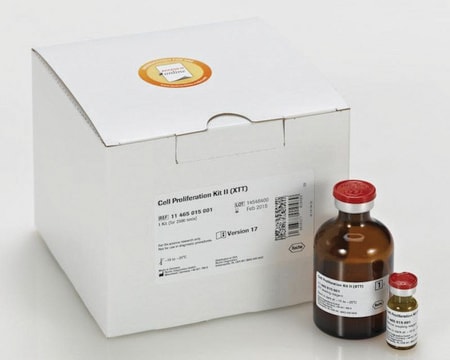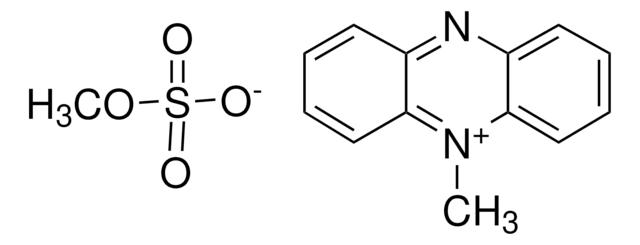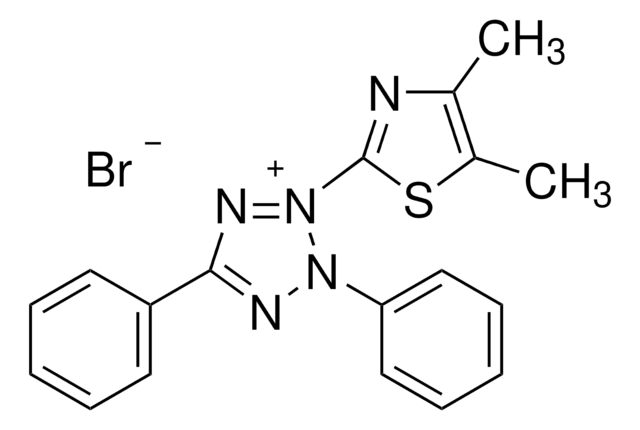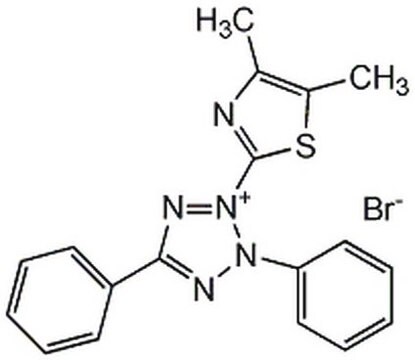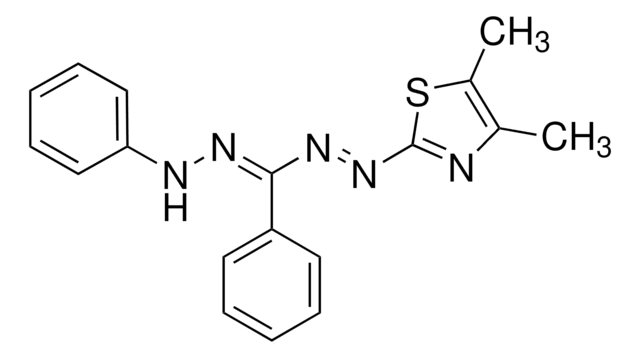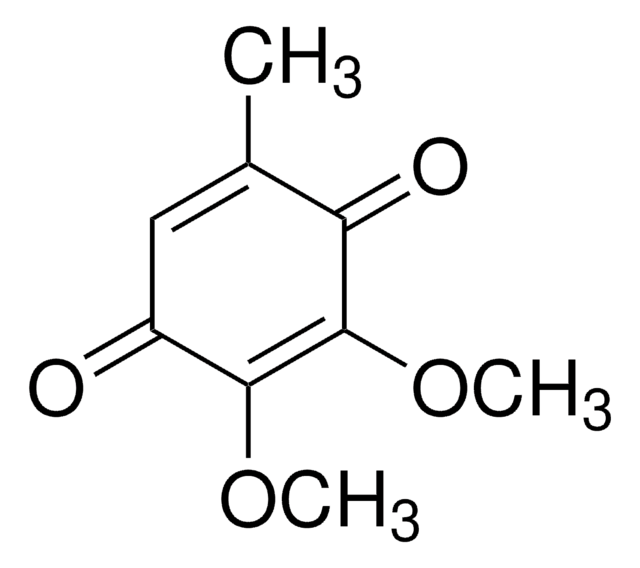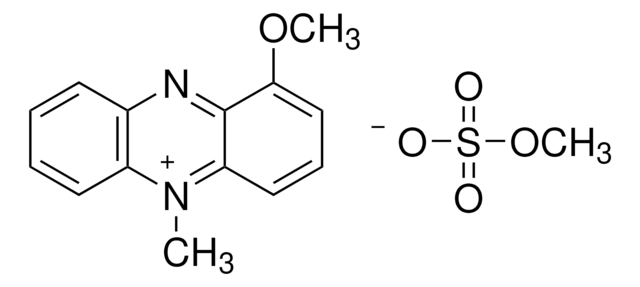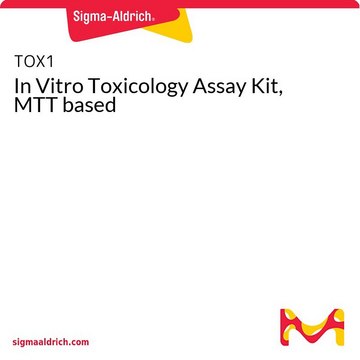X4626
XTT Natriumsalz
powder, BioReagent, suitable for cell culture
Synonym(e):
2,3-Bis-(2-methoxy-4-nitro-5-sulfophenyl)-2H-tetrazolium-5-carboxanilid Inneres Salz
About This Item
Empfohlene Produkte
Produktlinie
BioReagent
Qualitätsniveau
Assay
≥90%
Form
powder
Lagerbedingungen
dry at room temperature
Methode(n)
cell culture | mammalian: suitable
protein quantification: suitable
Anwendung(en)
detection
Nachweisverfahren
colorimetric
Lagertemp.
2-8°C
SMILES String
[Na+].COc1cc(c(cc1-n2nc(n[n+]2-c3cc(c(cc3OC)[N+]([O-])=O)S([O-])(=O)=O)C(=O)Nc4ccccc4)S([O-])(=O)=O)[N+]([O-])=O
InChI
1S/C22H17N7O13S2.Na/c1-41-17-8-15(28(31)32)19(43(35,36)37)10-13(17)26-24-21(22(30)23-12-6-4-3-5-7-12)25-27(26)14-11-20(44(38,39)40)16(29(33)34)9-18(14)42-2;/h3-11H,1-2H3,(H2-,23,30,35,36,37,38,39,40);/q;+1/p-1
InChIKey
JACYMBNQPPWQML-UHFFFAOYSA-M
Suchen Sie nach ähnlichen Produkten? Aufrufen Leitfaden zum Produktvergleich
Allgemeine Beschreibung
Anwendung
Biochem./physiol. Wirkung
Prinzip
Ähnliches Produkt
Signalwort
Danger
H-Sätze
Gefahreneinstufungen
Self-react. C
Zusätzliche Gefahrenhinweise
Lagerklassenschlüssel
4.1A - Other explosive hazardous materials
WGK
WGK 3
Flammpunkt (°F)
Not applicable
Flammpunkt (°C)
Not applicable
Persönliche Schutzausrüstung
Eyeshields, Gloves, type N95 (US)
Analysenzertifikate (COA)
Suchen Sie nach Analysenzertifikate (COA), indem Sie die Lot-/Chargennummer des Produkts eingeben. Lot- und Chargennummern sind auf dem Produktetikett hinter den Wörtern ‘Lot’ oder ‘Batch’ (Lot oder Charge) zu finden.
Besitzen Sie dieses Produkt bereits?
In der Dokumentenbibliothek finden Sie die Dokumentation zu den Produkten, die Sie kürzlich erworben haben.
Kunden haben sich ebenfalls angesehen
Unser Team von Wissenschaftlern verfügt über Erfahrung in allen Forschungsbereichen einschließlich Life Science, Materialwissenschaften, chemischer Synthese, Chromatographie, Analytik und vielen mehr..
Setzen Sie sich mit dem technischen Dienst in Verbindung.